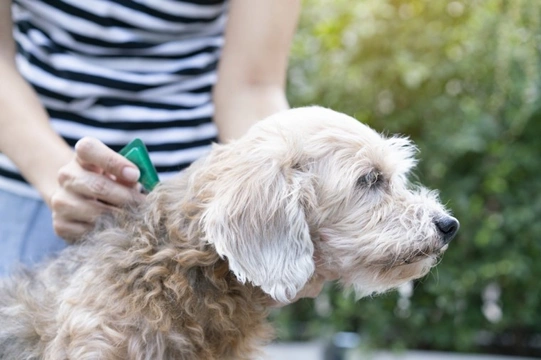
Seven things that can cause your dog’s flea treatments to fail
Treating your dog to prevent fleas and to eradicate any infestations that may be present is an important part of dog ownership, and when our flea products are working, we don’t usually think about them other that when it is time to administer the next dose.
However, if you find that your dog’s flea treatments don’t seem to be working or you’re not convinced that they are providing the level of protection that they are supposed to, getting to the bottom of what is going on can be a challenge.
In some cases, changing over to a different product might solve the issue but this is not always the case, and you might simply find that the problem is replicated with the new product as well.
With this in mind, this article will outline seven things that can cause your dog’s flea treatments to fail or become ineffective, in order to enable you to get to the bottom of the issue and resolve it. Read on to learn more.
The dosage is wrong
First of all, dogs come in different sizes and so to do doses of the flea treatment products they need to get the appropriate level of protection.
Most dog flea treatments are sold in sizes based on the weight of the dog, and larger dogs do of course need larger doses. You should never give your dog a larger dose than is warranted for their size as this might make them ill, but if you aren’t sure of your dog’s weight or have for some reason been using a dosage meant for a smaller dog, this is likely to be the issue.
The product is completely ineffective across the board
If you buy your flea products off the shelf in a supermarket or pet shop, then the cause of the problem is likely as simple as that! Products that can be bought off the shelf for a couple of pounds each simply don’t work, and never really used to be effective either historically, although they did in the main part used to work to an extent.
They also tend to contain ingredients that don’t agree with a reasonable number of dogs – so flea collars, powders and pills that seem overly cheap and easy to get hold of without needing to speak to a vet or a pharmacist should be avoided.
The product has become ineffective in your local area
Fleas can develop a tolerance to the active ingredient in products used to eradicate them over the course of years, and this tends to happen in localised pockets first before over time, spreading across the country to the extent that products that used to be very good no longer work at all.
If you buy a good quality flea product from a vet or pharmacy and it simply isn’t working, this may be what has occurred. Most veterinary clinic have a good handle on what does and doesn’t work in their local area as a result of direct experience, which is another point in favour of buying from your vet.
You’re applying the product wrongly
Flea products come in different formats, and the most common of these is topical pipettes that are applied to the skin at the back of your dog’s neck.
The product is applied in this area because it allows it to diffuse across the skin of the whole body and also, because it is in a place where your dog cannot reach to lick it off.
However, for it to work it needs to be applied to the skin itself, and not the fur – and if you don’t manage this, it won’t provide the appropriate protection.
Applying the product to another area of the body is apt to render it ineffective too.
The product isn’t staying put
If you use a spot-on product and your dog manages to lick if off because it’s in the wrong place, it is washed off by rain, or they go swimming within a few days of treatment, this will remove the product and so, remove its protection too.
If your flea treatment is a pill or other oral product and your dog vomits within a certain period of time after they take it, they won’t get the full dose. The same may be true if they suffer from diarrhoea.
You’re leaving too long between doses
You should apply your flea products at the stated rate of frequency and not try to save money by leaving gaps between doses, as fleas are opportunistic and don’t need a formal invitation in order to move in!
Additionally, if you know that your product may have failed for one of the reasons mentioned above, you should speak to your vet to determine if you should wait until the next dose if due or repeat it now, rather than assuming either way.
Your house is infested with fleas
Finally, even if your dog lives in an environment that is itself lousy with fleas, they should still be protected if the product used on them is fully effective. However, a flea-infested house does increase the chances of your dog themselves having fleas if something goes wrong, and treating your home for fleas now and then is just as important as being vigilant about treating your dog themselves.



